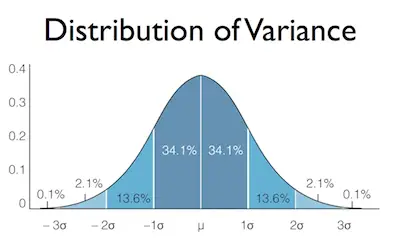When you’re studying statistics, it’s likely that you already heard about variance. After all, this is one of the first concepts you learn.
Learn everything you need about z-score tables.
What is Variance?

Variance is simply a measurement of the spread between numbers in a data set. So, you can say that variance measures how far each number in a data set is from the mean as well as from all the other numbers in your data set.
Understanding Variance
Now that you already know what variance is, you also need to learn how to calculate it.
Understanding variance analysis.
So, when you want to calculate variance, you need to take the differences between each number in the data set and the mean, and then square the difference to make them positive. Finally, you still need to divide the sum of squares by the number of values in your dataset. If this sounds too complicated, you can relax because the formula you need to use is pretty straightforward.
Variance’s Formula

Where:
xi = refers to the ith data point
xˉ = refers to the mean of all data points
n = refers to the number of data points
One of the things that you also need to keep in mind is that variance and the standard deviation are very close. After all, the square root of the variance is the standard deviation (σ).
Learn more about the standard deviation.
How To Use Variance
Ultimately, the variance measures the variability from the mean or average and it can be used for a wide range of things. For example, if you’re an investor, you may be used to use variance even though you may have not realized it yet. Ultimately, variability is volatility, and volatility is a measure of risk. Therefore, the variance statistic can help determine the risk an investor assumes when purchasing a specific security.

When you have a large variance, it means that the numbers in the data set are far from the mean as well as far from each other. On the other hand, when you have a small variance, it means that the numbers in the data set are close to the mean as well as close to each other. When you have a variance that is equal to zero, it means that all values within your data set are identical.
Note that variances are always positive or zero. There can’t be a negative variance.
What is a confidence interval?
Advantages And Disadvantages Of Using Variance
In statistics, researchers use variance to know how individual numbers relate to each other within a data set.
One of the main limitations of variance is the fact that it gives added weight to outliers. In case you don’t know, outliers are the numbers that are far from the mean. But when you square these numbers, you can skew the data.
On the other hand, one of the biggest advantages of using variance is the fact that it treats all deviations from the mean exactly the same way regardless of their direction. The squared deviations cannot sum to zero and give the appearance of no variability at all in the data.
You should also keep in mind that interpreting variance is not always easy.
